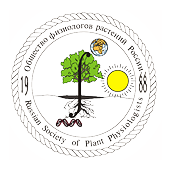Новости науки и практики // Февраль 2021

Horizontal genome transfer by cell-to-cell travel of whole organelles
Hertle et al. used grafting to identify the mechanisms involved in plastid genome transfer from plant to plant. They show that during proliferation of wound-induced callus, plastids dedifferentiate into small, highly motile, amoeboid organelles. Simultaneously, new intercellular connections emerge by localized cell wall disintegration, forming connective pores through which amoeboid plastids move into neighboring cells.
https://advances.sciencemag.org/content/7/1/eabd8215.full
Plant roots sense soil compaction through restricted ethylene diffusion
It's tough to drive a spade through compacted soil, and plant roots seem to have the same problem when growing in compacted ground. Pandey et al. found that the problem is not, however, one of physical resistance but rather inhibition of growth through a signaling pathway.
Analysis of phloem trajectory links tissue maturation to cell specialization
Roszak et al. found that cellular specification is mediated near the stem cell niche by PHLOEM EARLY DOF (PEAR) transcription factors. However, the PEAR dependent differentiation program is repressed by a broad gradient of PLETHORA (PLT) transcription factors, which directly inhibit PEARs’ own direct target ALTERED PHLOEM DEVELOPMENT (APL).
https://www.biorxiv.org/content/10.1101/2021.01.18.427084v1
A highly sensitive technique for measuring the state of a cytoskeleton
Until now, analysis of cytoskeleton organization was generally made by manually checking microscopic images. The new method uses microscopic image analysis techniques to automatically measure cytoskeleton organization. The researchers expect it to dramatically improve our understanding of various cellular phenomena related to cytoskeleton bundling.
https://www.eurekalert.org/pub_releases/2021-01/ku-ahs011421.php
How climate caprices can trigger plants
An international research team now shows in the journal Proceedings of the Royal Society B what variety of malformed leaves the carnivorous Australian pitcher plant Cephalotus follicularis can form. To tease out these hidden reaction norms, they subjected the plants for twelve weeks to different conditions in growth chambers.
https://www.eurekalert.org/pub_releases/2021-01/uow-hcc012721.php
Small RNAs shoot for the root
Small RNAs, not mRNAs, are the real messengers when it comes to long-distance communication. Li and colleagues demonstrate, by using heterografts of soybean and common bean, that a large proportion of small RNAs produced in the shoots are transported to the roots and, by contrast, that the mobility of messenger RNAs between shoots and roots is very limited in both directions4. Thus, small RNAs — rather than mRNAs — deserve the ‘messenger’ title for long-distance communication.
https://www.nature.com/articles/s41477-020-00836-3
A conserved regulatory module regulates receptor kinase signaling in immunity and development
Ligand recognition by cell-surface receptors underlies development and immunity in both animals and plants. DeFalco et al. show that signaling by plant receptors for pathogen-associated molecular patterns (PAMPs) in immunity and CLAVATA3/EMBRYO SURROUNDING REGION-RELATED peptides (CLEp) in development employ a similar regulatory module.
https://www.biorxiv.org/content/10.1101/2021.01.19.427293v1.full
Haploid induction by a maize cenh3 null mutant
The production of haploids is an important first step in creating many new plant varieties. One approach used in Arabidopsis involves crossing plants expressing different forms of centromeric histone H3 (CENP-A/CENH3) and subsequent loss of genome with weaker centromeres. However, the method has been ineffective in crop plants. Wang et al. describe a greatly simplified method based on crossing maize lines that are heterozygous for a cenh3 null mutation.
https://advances.sciencemag.org/content/7/4/eabe2299
Sloppy science or groundbreaking idea? Theory for how cells organize contents divides biologists
Cells may form dropletlike functional compartments through a process called phase separation, but not as often as some propose.
Coordination between microbiota and root endodermis supports plant mineral nutrient homeostasis
The root provides mineral nutrients and water to the plant. Diffusion barriers seal the root, preventing the loss of internal water and nutrients. Salas-González et al. found that microbes living on and in roots of the model plant Arabidopsis thaliana influence diffusion. barrier formation, which affects the balance of mineral nutrients in the plant.
https://science.sciencemag.org/content/371/6525/eabd0695
Comprehensive characterization of vascular structure in plants
Plant researchers and bioinformatics researchers have succeeded for the first time in identifying the functions of the different cell types in the leaf vasculature of plants.
https://www.sciencedaily.com/releases/2021/01/210112085349.htm
More efficient maize growth
Plant researchers have investigated the transport of compounds in maize. They focused on the mechanism used to transport the products of photosynthesis for further distribution in the plant through its phloem loading pathways. They describe how this mechanism has potentially created a special evolutionary advantage for maize.
https://www.sciencedaily.com/releases/2021/01/210108120106.htm
Three new methods indicate that CO2 concentration affects plant respiration in the range relevant to global change
Short-term responses of plant dark respiration to carbon dioxide concentration ([CO2]) in the range anticipated in the atmosphere with global change remain controversial, primarily because it is difficult to convincingly eliminate the many possible sources of experimental error in measurements of carbon dioxide or oxygen exchange rates. The data provide new evidence that the rate of dark respiration in plant tissue often decreases with increasing [CO2] in the 200 to 800 μmol mol -1 range.
https://academic.oup.com/aobpla/advance-article/doi/10.1093/aobpla/plab004/6075855?searchresult=1
Coordination of leaf water supply and demand in aquatic and land plants
Is there a difference between emergent aquatic and terrestrial monocot herbs when it comes to coordination of leaf stomatal and vein traits?
Plant genome editing expanded with newly engineered variant of CRISPR-Cas9
Scientists have created a newly engineered variant of the famed gene editing tool CRISPR-Cas9. SpRY removes the barriers of what can and can't be targeted for gene editing, making it possible for the first time to target nearly any genomic sequence in plants for potential mutation.
https://www.sciencedaily.com/releases/2021/01/210122112320.htm
Polyploidy: an evolutionary and ecological force in stressful times
Whole-genome duplications seem to correlate with periods of extinction or global change, while polyploids often thrive in harsh or disturbed environments. Evidence is also accumulating that biotic interactions, for instance, with pathogens or mutualists, affect polyploids differently than nonpolyploids. Here, we review recent findings and insights on the effect of both abiotic and biotic stress on polyploids versus nonpolyploids and propose that stress response in general is an important and even determining factor in the establishment and success of polyploidy.
https://academic.oup.com/plcell/advance-article/doi/10.1093/plcell/koaa015/6015242?searchresult=1
Uncovering how plants see blue light
Plants can perceive and react to light across a wide spectrum. New research shows how plants can respond to blue light in particular.
Plants don't have dedicated light-detecting organs, like our eyes. They do have a variety of dedicated receptors that can sense almost every single wavelength. One such are the blue light photoreceptors called cryptochromes. When the cryptochrome detects an incoming photon, it reacts in a way that triggers a unique physiological response.
https://www.eurekalert.org/pub_releases/2021-01/uoc--uhp010421.php
Pioneering algal recombineering
https://academic.oup.com/plcell/advance-article/doi/10.1093/plcell/koab023/6122722
Chinese scientists uncover gene for rice adaption to low soil nitrogen
Chinese scientists from the Institute of Genetics and Developmental Biology of the Chinese Academy of Sciences (CAS) have found a gene that plays an important role in helping rice adapt to low soil nitrogen.
https://www.eurekalert.org/pub_releases/2021-01/caos-csu010621.php
How plants produce defensive toxins without harming themselves
Defense and autotoxicity: Researchers elucidate the biosynthesis and mode of action of diterpene glycosides in wild tobacco.
https://www.eurekalert.org/pub_releases/2021-01/mpif-hpp010721.php
Новости
Новости науки и практики // Апрель 2024
Обзор научных новостей, опубликованных во всемирной паутине за последний месяцФосфорилирование плазматической мембраны H+-АТФазы Thr881 (треонин) участвует в светоиндуцированном открывании устьиц
Ученые из Университета Нагои (Nagoya University) и Института трансформирующих биомолекул (WPI-ITbM) обнаружили новый ...Научная конференция «Photosynthesis and Hydrogen Energy Research for Sustainability – 2024»
Приглашаем Вас принять участие в XII международной научной конференции


Объявления
Записей не найдено.



